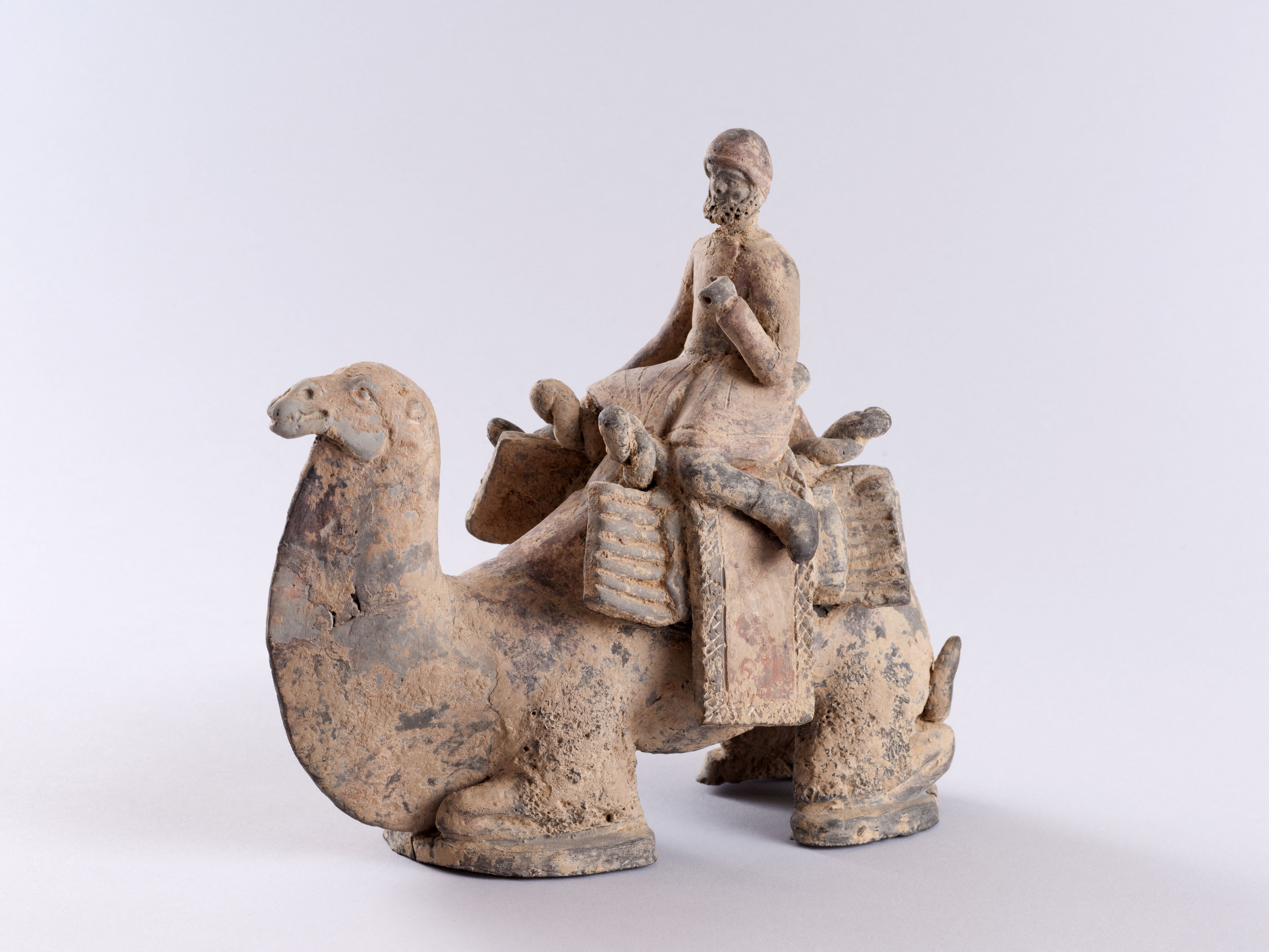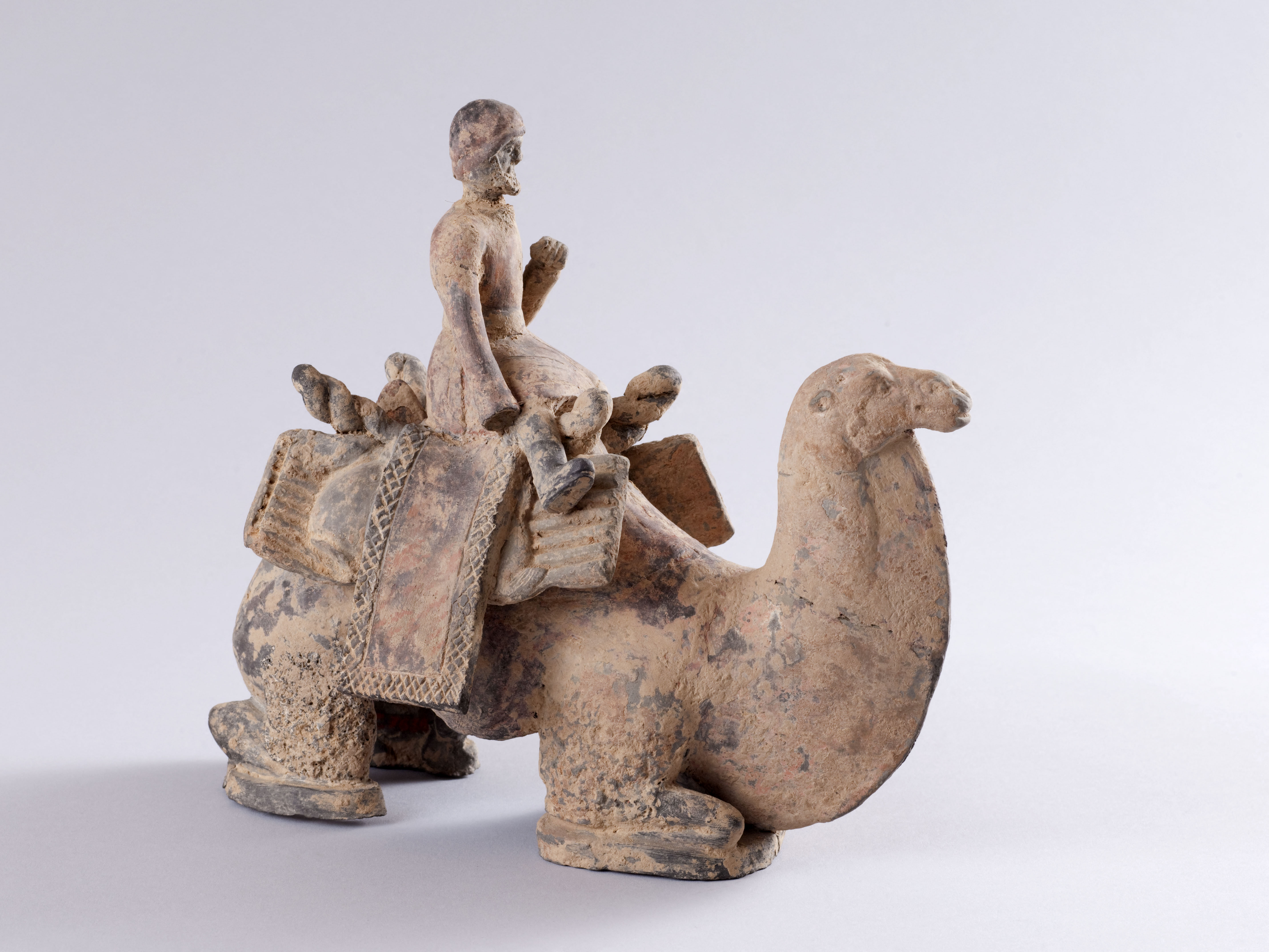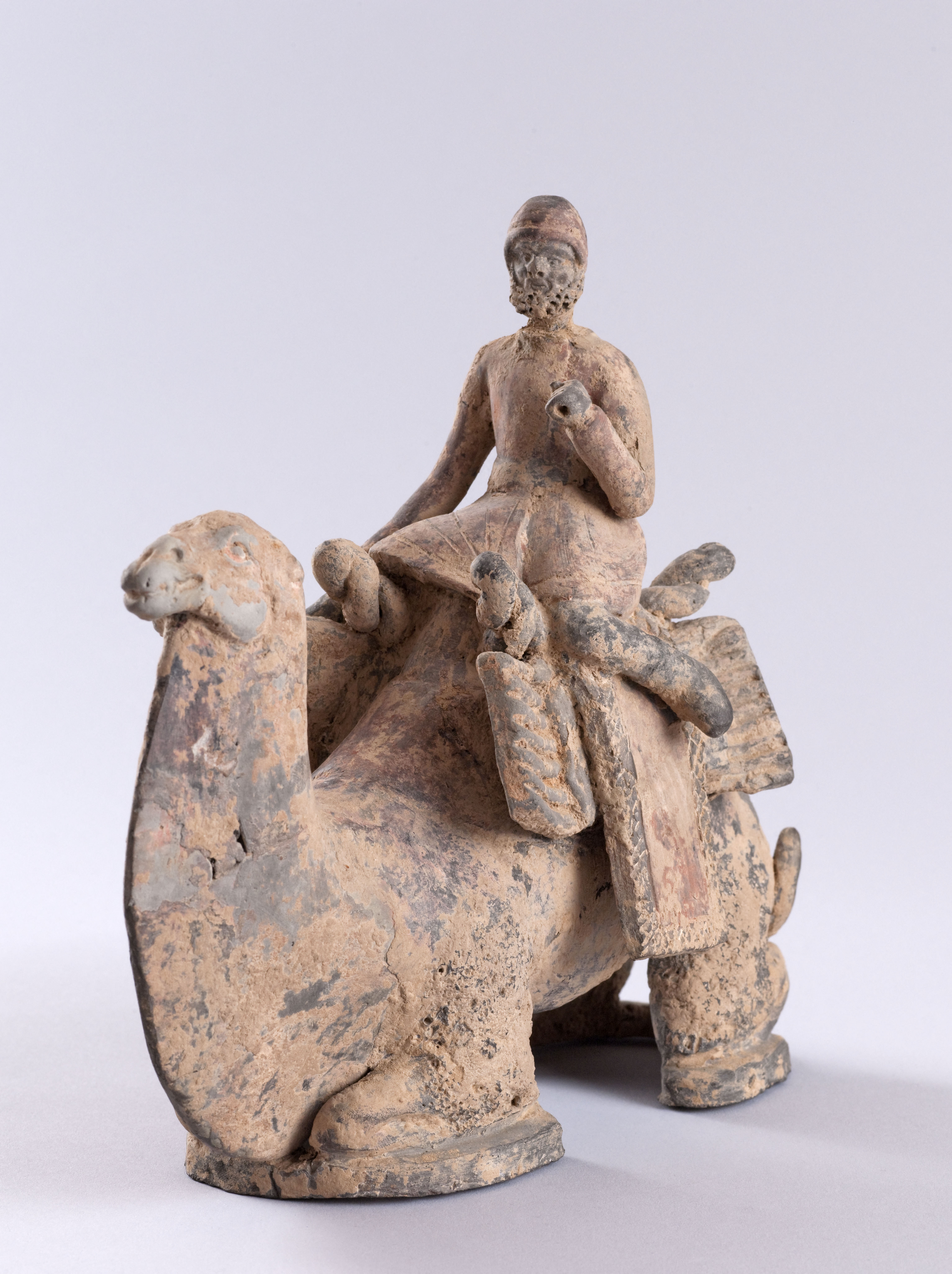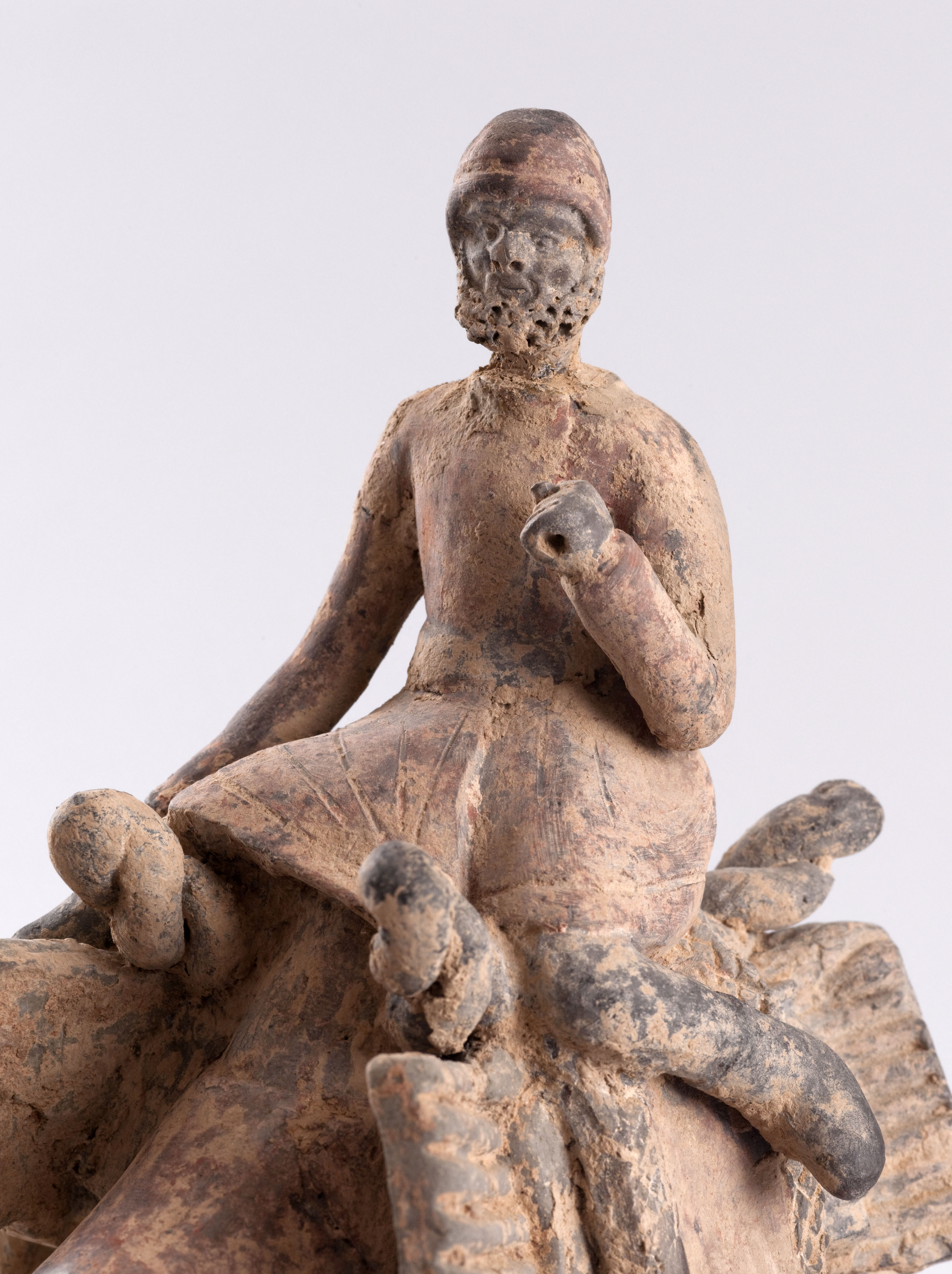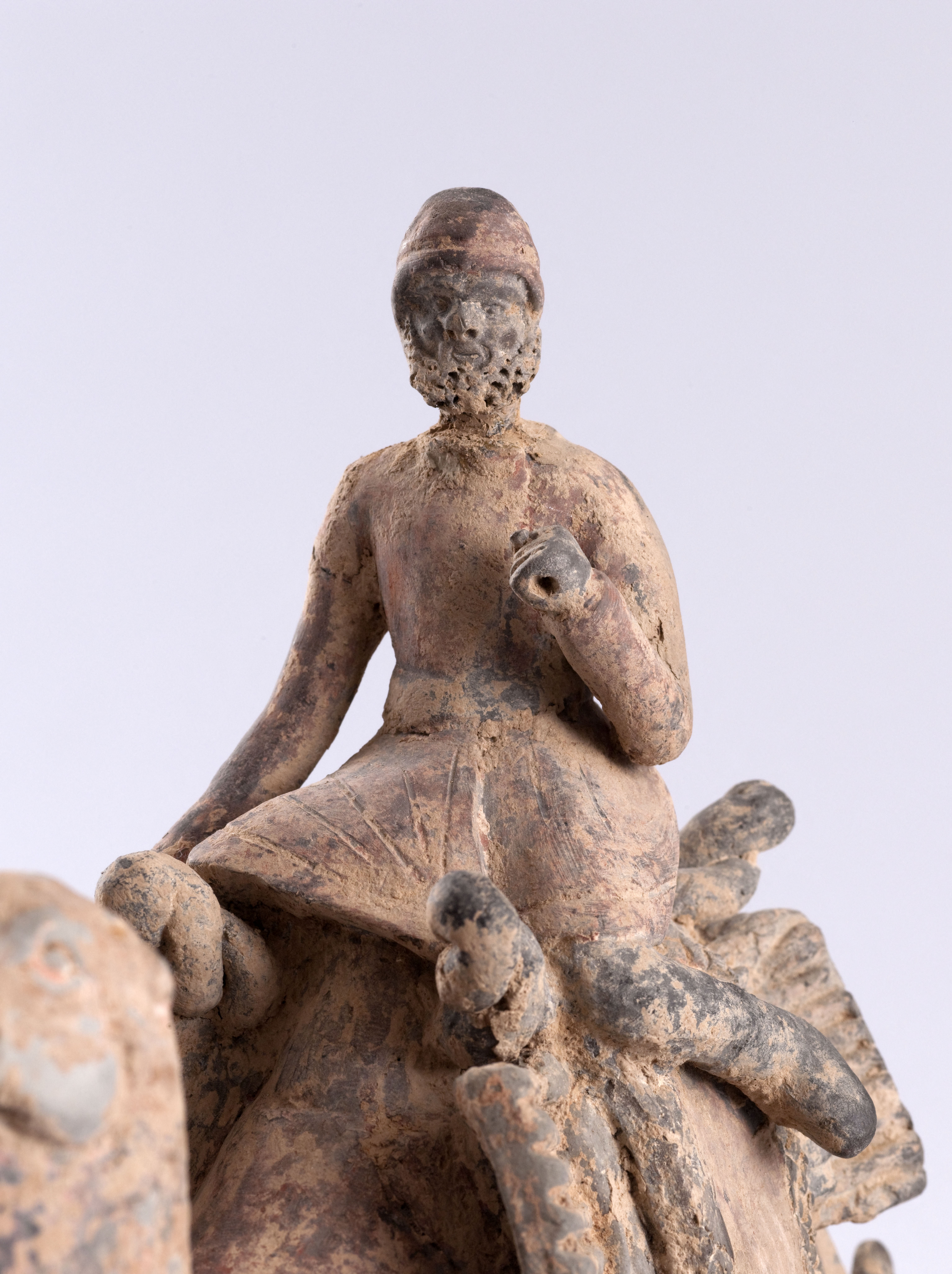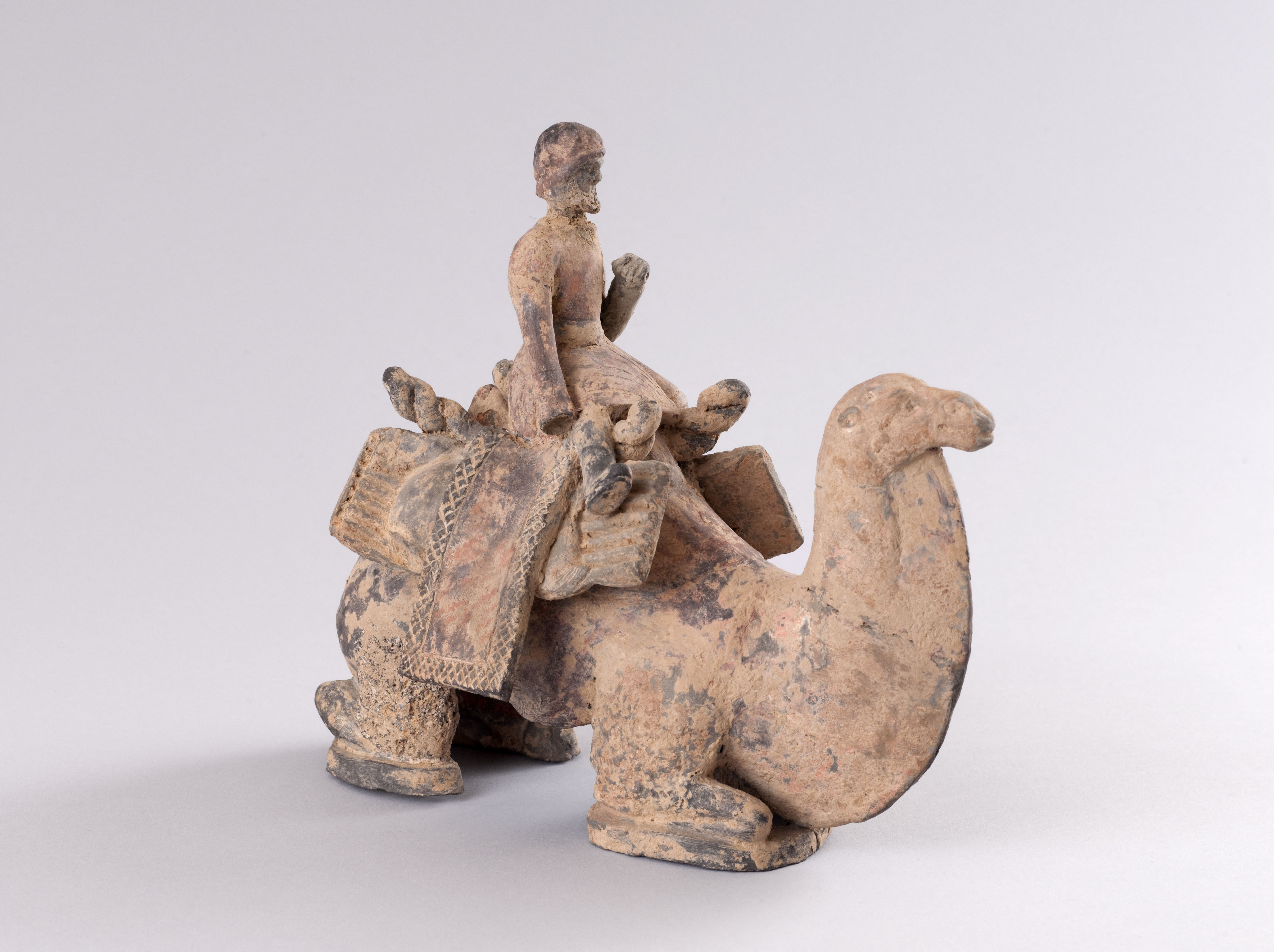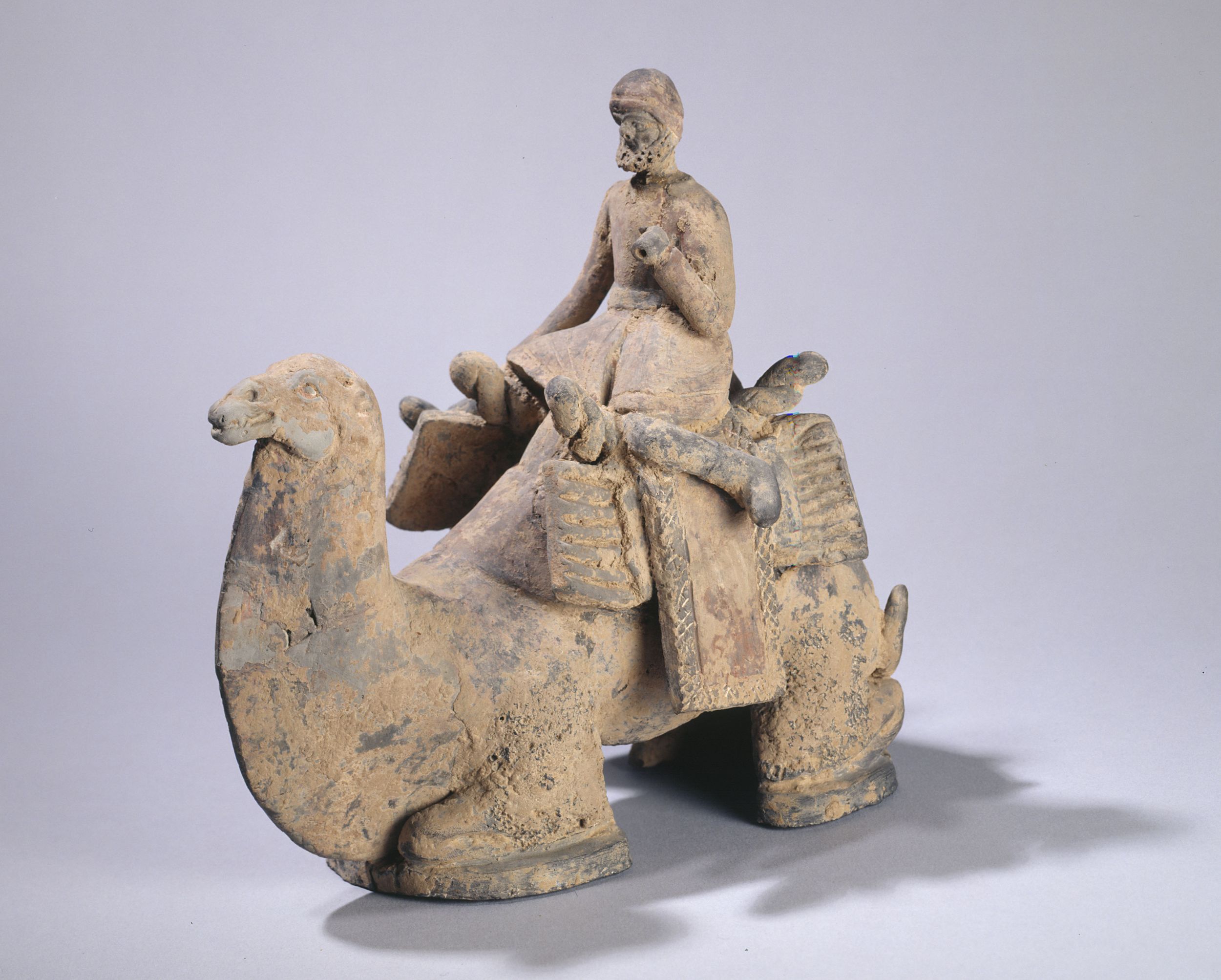
Chamelier
Terre cuite, Moulage, Couleurs - Pigments
Statuette, Mingqi
Achat en vente publique
M.C. 7636
Since ancient times, rare and exotic products had been traded long distance across Eurasia. After the Christian era, the existence of great empires affording travellers relatively safe conditions and a better knowledge of the trade winds enabled the unprecedented development of the “Silk Road”. Caravans transported luxury goods and spices from one market to another by road. The same went for the ports, with goods shipped by maritime routes. In the first millennium, this large-scale international trade reached its height.
The numerous foreigners in China between the 4th and 9th centuries belonged to different ethnic groups, whose identification on the basis of their costume has fluctuated. Figures wearing a high pointed bonnet often partly collapsed on itself, are usually identified as Sogians today, but the bonnet rolled up at the edge worn by the Cernuschi Museum caravan driver gives no clue as to its precise geographical origin.
The garments worn by foreigners nevertheless provide more information about their country of origin than their stereotypical facial characteristics, such as the curly beard worn by the Cernuschi Museum camel driver.
Camel drivers and tradesmen from the West relating to the long-distance caravan trade were no doubt interpreted as symbols of prosperity, justifying depictions of them being placed in the tombs.
The camel is shown laden, with a water flask at its rear on the right. Rolls of silk are clearly visible on the sides. The animal’s vigour and sense of its being captured from life makes this mingqi is one of the most remarkable of the collection.
Gilles Béguin, Le petit peuple des tombes, Paris Musées, 2010, p.45-46.

